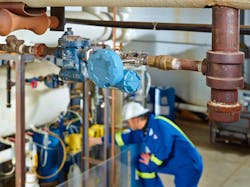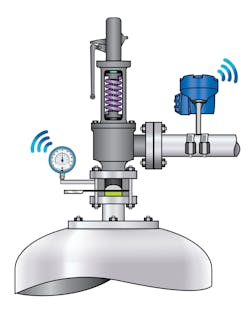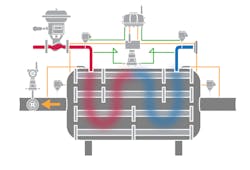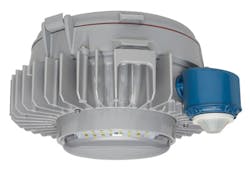Improving sustainability in four practical steps

Sustainability is so much more than the latest buzzword. It encompasses not only whether a company has the resources and skills to continue to remain profitable for decades to come but now also refers to what a company does to minimize its climate impact and use resources responsibly.
Of primary concern is how a company uses fossil fuels and what types of emissions they produce along with the product they put out—followed closely by their water usage and the use of other scarce resources. But when it comes to doing the right thing and making changes, many companies find themselves pulled in different directions to meet various stakeholder demands. What are the practical steps to reducing a carbon footprint? How is success measured, and what corrective steps can be taken if sustainability goals are not met? How can sustainability efforts complement other business drivers?
Rather than tell an all-encompassing story of how companies can conduct a complete overhaul to move away from fossil fuels, this article will focus on four concrete, cost-effective steps that manufacturers of all sizes can take toward a reduced carbon footprint. These areas are:
- Monitoring and reducing emissions from pressure relief valves (PRVs).
- Reducing wasted energy by increasing steam trap efficiency.
- Monitoring efficiency and reducing energy use by heat exchangers.
- Reducing energy use from facility lighting.
Meeting sustainability through digital transformation
Implementing digital capabilities to improve performance can have the added benefit of meeting sustainability goals. These goals can be tracked with data collected from newly implemented digital tools, offering real-time insight into processes.
Before making that first change on the path toward sustainability, it is essential to audit the current systems and determine where improvements can be made to determine which improvements will have the greatest impact. New wirelessly enabled sensors can provide clear data on the different processes running in a facility to help baseline energy use and emission sources.
Selecting digital and wirelessly enabled devices saves considerably on installation costs and time as no new wiring will be required. Installing sensors on physical assets that communicate using WirelessHART to relay data to a host system or asset reliability monitoring software on the business network is reliable and cost-effective. WirelessHART networks integrate easily with a facility's existing Wi-Fi and Ethernet networks.
Part of using wireless sensors effectively is utilizing pre-configured data analysis tools (Figure 1) that can collect raw sensor data, process it, and present it on interactive dashboards to relevant parties, such as process or maintenance engineers. With low configuration requirements or system integration assistance, this approach is a great start to sustainability efforts to quickly and cost-effectively provide key performance indicators (KPIs) and feedback with real return on investment (ROI) in the form of lower energy costs and emissions.
Looking at the types of sustainability projects described below, it becomes clear that there are multiple benefits associated with adopting sustainable practices. These projects reduce energy consumption, improve efficiency, reduce emissions, and can reduce waste depending on the process being run. Additionally, some of these projects can extend equipment life through more effective maintenance, improving safety and potentially reducing environmental impacts.
Steam traps – what is lost
A steam trap, whether in a power plant, chemical processing facility, or any other process facility that requires steam, separates and drains the liquid condensate from live steam lines to maintain the quality of steam and avoid mechanical damage (through water hammer events).
In simplest terms, a steam trap is a valve that opens and closes automatically to release condensate. Most versions of steam traps have moving parts and a seating surface that can fail. For example, if there is scale in the lines, it can break free and settle in valve seats or mechanisms. General operating procedures typically include annual audits of the steam trap systems and visual inspection for:
- Steam leak, indicating mechanical failure and directly wasting steam.
- Blow-through, where the valve remains open and continuously releases steam directly into the drain, wasting energy.
- Cold, meaning valve is stuck closed with no condensate release, causing back-up of condensate thereby reducing steam quality and potentially causing damaging water hammer events.
- Working, and effectively removing condensate.
On average, 18% of steam traps in large chemical manufacturing facilities fail each year, which results in wasted energy costing up to $16,000 per failed trap. Steam is a significant part of many plants' energy budgets, so reducing waste, particularly from steam traps, can be an easy and quick win for sustainability programs.
When sized correctly and operating under normal circumstances, a steam trap will open intermittently and discharge condensation in slugs. Slugging can be heard through adjacent piping. By mounting an acoustic transmitter (Figure 2) nearby, it is possible to hear the cycling and track that activity with the right algorithm that learns to recognize the characteristics of the activity. Data collected can be sent via WirelessHart to a central analysis platform where operators can monitor steam trap activity across the plant.
The performance and failure characteristics of steam-traps are well known, and pre-configured analytic software (such as Emerson's Plantweb Insight software) can be used, avoiding time-consuming and expensive custom development of algorithms in a control system or other analytics platform. Performance information is available in real-time, making it easier to take care of changes in steam trap performance before they cause long-term problems. It is important to note that a part of this sustainability effort is the response to alerts that must be built into the work processes so that the replacement of failed traps is scheduled and performed in a timely manner.
Process loss through faulty pressure relief valves
Typically, pressure relief valves (PRVs) provide the mechanism to let pressure escape before dangerous conditions can develop. Typically, operators monitor and control the pressure of the process to avoid the PRV opening, determine which PRVs may be open during an upset, and rely on periodic inspections to determine if PRVs are leaking or faulty. Most PRVs are purely mechanical devices that do not have sensors to report back their condition to the control or asset monitoring systems.
Like steam trap monitoring, PRV activity can be monitored using acoustic sensors (Figure 3) on the vent lines to pick up the ultrasonic frequency sounds made by fluid passing through the valve seat and transmitted through the metal. A PRV opens to release liquid, gas or a mixture of both, and once the pressure is sufficiently relieved, the valve should close and seal itself again. Once the valve is closed and sealed, the sound of escaping liquid or gas disappears too.
An acoustic sensor will "hear" this, and when combined with analytic software, the time and duration of the release can be logged and reported (often for regulatory purposes). A key advantage of online monitoring of the PRVs using this method is that a PRV that is releasing can be identified almost immediately, and the operator can respond to the exact cause of the incident rather than spending significant time inferring which PRV is open before responding to the event.
After a release event, the PRV should reseal and only open when the set pressure is reached again. Note the use of the word "should." Unfortunately, sometimes the valve may not completely reseal due to contamination or damage to the sealing surfaces. Monitoring ensures that issues such as a leak caused by incomplete resealing are spotted before increased liquid or gas release can significantly impact the process and produce excessive emissions. Without real-time data, it could take operators hours or even days to realize there is a problem, let alone pinpoint where the problem is. Additionally, real-time monitoring facilitates more accurate reporting of actual emissions that can provide a KPI for the facility's sustainability program.
The impact of heat exchanger efficiency
The biggest challenge heat exchangers face is the efficiency degradation due to fouling. Deposits from the process may build up on the heat exchanger and will cause the heat transfer to decline in proportion to the thickness of the deposits, thereby making the exchanger less efficient. Efficiency is calculated by monitoring the following list of variables:
- Process fluid temperature differential (inlet compared with outlet) and flow.
- Transfer fluid temperature differential and flow.
- Cooling air temperature and flow (for air-cooled designs).
These measurements help determine how much heat is being transferred, showing overall efficiency. In many applications, a bank of several heat exchangers is installed in series, and the only process monitoring is for the inlet and outlet flow and temperature of the entire bank of exchangers, rather than for each individual heat exchanger. However, due to manufacturing and maintenance variations, the buildup and degradation of efficiency will not be consistent across the bank of heat exchangers.
Adding measurements (Figure 4) to each exchanger ensures relevant data is instantly available to process engineers, and maintenance cleaning can be scheduled based on individual exchanger performance rather than by a nominal time based on prior (and possibly irrelevant) history.
Using WirelessHART instruments to add the "missing measurements" is fast and cost-effective and, in the case of heat exchangers, can include:
- Temperature sensors with Emerson’s Rosemount X-well technology that accurately measure process temperatures with external clamp-on sensors without requiring thermowell penetrations into the process
- Multiple sensor temperature transmitters that allow up to four temperature sensors to be connected to a single transmitter
- Differential pressure (DP) transmitters devices across each individual heat-exchanger process fluid inlet and outlet to indicate when fouling is starting to accumulate or if there is a tube leak.
Gathering all this data and using software that is pre-configured with heat-exchanger performance analytics and dashboards makes it easy for a process engineer or maintenance engineer to see how the system is performing and make operating adjustments or schedule maintenance accordingly. The system uses machine learning to baseline healthy performance of each heat exchanger and can be set to send an alert when it identifies abnormal situations and can send an alarm when preset thresholds are exceeded, such as when fouling is resulting in excessive energy use or degrade productivity.
Lighting, an easy fix
As every parent knows, lights are often left on in unoccupied areas and can be a significant use of energy. In many process manufacturing facilities lights stay on all the time, regardless of activity or time of day. Also, many plants still use high-energy metal-halide high-intensity discharge (HID) lamps. Multiplying this kind of energy waste across hundreds, or thousands, of fixtures, the amount of power consumed is staggering.
One of the best solutions now available are the new smart LED fixtures (Figure 5). They require up to 70% less energy than HID fixtures for the same light output. They can save additional money by being paired with digital motion sensors that ensure lights are turned on only when personnel are there and when it's dark enough to need artificial lighting. Additionally, some fixtures communicate via WirelessHART and can be remotely activated and monitored to further track and reduce energy consumption. These "smart" fittings can be set to send diagnostic data on the status and condition of each fixture, ensuring timely maintenance. A further benefit of the WirelessHART connectivity of these fittings is that they can strengthen existing WirelessHART mesh networks and facilitate additional wireless sensors across the plant.
Building sustainability incrementally
Using the tools described – WirelessHART sensors, data analytics and dashboards – will help reduce energy use and emissions that positively impact the company, shareholders, surrounding communities and the environment. Typically, applying these kinds of digital improvements also benefits the profitability of the company as there is less unscheduled maintenance and lower energy costs. Additionally, using WirelessHART sensors and pre-configured analytics means they can be implemented quickly with fast ROI and can be implemented in stages to provide sustainability-based KPIs for company sustainability reporting to stakeholders.
Shane Hale has over 30 years of experience in the instrumentation and control field in many industry segments, including oil and gas, petrochemicals, and metals and mining. Hale joined Emerson 24 years ago as a field technician in Sydney, Australia, and has held various roles, including project design and commissioning engineer for international projects, business development manager, director of product management, and now global director of business development for Emerson's pervasive sensing group.
About the Author
Shane Hale
global director of business development
Shane Hale has over 30 years of experience in the instrumentation and control field in many industry segments, including oil and gas, petrochemicals, and metals and mining. Hale joined Emerson 24 years ago as a field technician in Sydney, Australia, and has held various roles, including project design and commissioning engineer for international projects, business development manager, director of product management, and now global director of business development for Emerson's pervasive sensing group.



